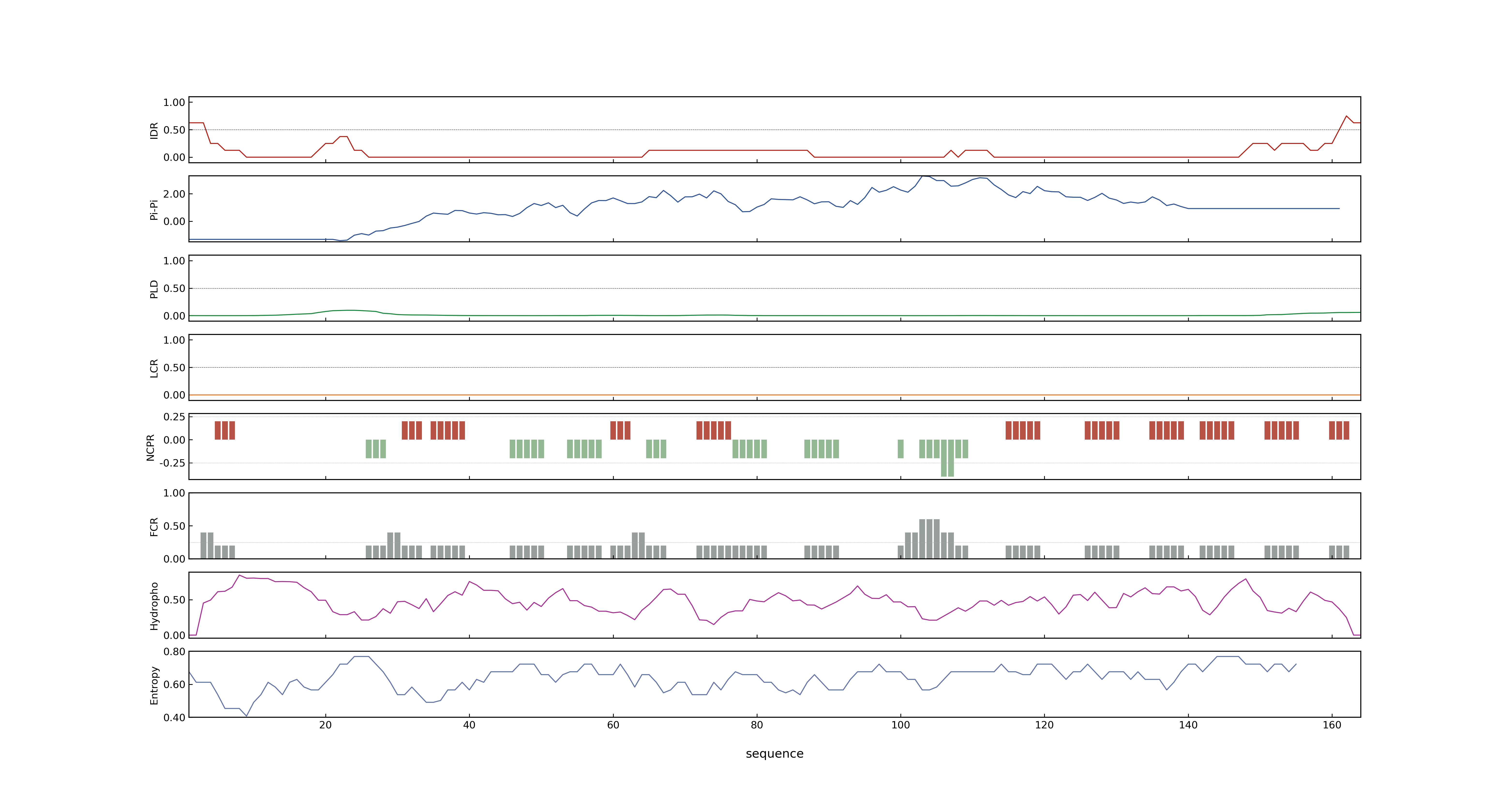- Information
- Symbol: OsPR1b
- MSU: LOC_Os01g28450
- RAPdb: Os01g0382000
- PSP score
- LOC_Os01g28450.1: 0.043
- PLAAC score
- LOC_Os01g28450.1: 0
- pLDDT score
- NA
- MolPhase score
- LOC_Os01g28450.1: 0.00197634
- MolPhase Result
- Publication
- Rice Oryza sativa L. OsPR1b gene is phytohormonally regulated in close interaction with light signals, 2000, Biochem Biophys Res Commun.
- The jasmonate pathway is a key player in systemically induced defense against root knot nematodes in rice, 2011, Plant Physiol.
- Characteristic expression of twelve rice PR1 family genes in response to pathogen infection, wounding, and defense-related signal compounds 121/180, 2008, Mol Genet Genomics.
- OsWRKY71, a rice transcription factor, is involved in rice defense response, 2007, J Plant Physiol.
- Functional analysis and expressional characterization of rice ankyrin repeat-containing protein, OsPIANK1, in basal defense against Magnaporthe oryzae attack, 2013, PLoS One.
- Cytokinins act synergistically with salicylic acid to activate defense gene expression in rice, 2013, Mol Plant Microbe Interact.
- Screening of rice Oryza sativa L. OsPR1b-interacting factors and their roles in resisting bacterial blight., 2015, Genet Mol Res.
- Genbank accession number
- Key message
- Exogenous ET (ethephon) and JA (methyl jasmonate) supply on the shoots induced a strong systemic defense response in the roots, exemplified by a major up-regulation of pathogenesis-related genes OsPR1a and OsPR1b, while the salicylic acid analog BTH (benzo-1,2,3-thiadiazole-7-carbothioic acid S-methyl ester) was a less potent systemic defense inducer from shoot to root
- Here, we report characterization of a rice basic PR1 (OsPR1b) gene, identified from screening a cDNA library prepared from jasmonic acid (JA)-treated rice seedling leaf, providing detailed and valuable insights into rice PR1 gene expression
- Co-treatment of leaf blades with CK and salicylic acid (SA), but not with either one alone, markedly induced pathogenesis-related genes OsPR1b and probenazole-induced protein 1 (PBZ1)
- The simultaneous application of SA, and ABA, with JA, respectively, showed almost complete inhibition of the JA-induced OsPR1b transcript by 200 microM SA or ABA, but not by 100 microM concentrated solutions, suggesting a potential interaction among JA, SA, and ABA, whereas KN dramatically enhanced JA-induced OsPR1b transcript upon simultaneous application
- The JA-inducible OsPR1b gene was also up-regulated by salicylic acid (SA), abscisic acid (ABA), and kinetin (KN)
- Furthermore, two marker genes in defense signaling pathway, OsNPR1 and OsPR1b, were constitutively expressed in OsWRKY71-overexpressing transgenic plants
- These results suggest that OsWRKY71 might function as a transcriptional regulator upstream of OsNPR1 and OsPR1b in rice defense signaling pathways
- We postulated that OsPR1b may participate in the resistance signaling pathway of rice
- Of simultaneous treatments with hormones and pathogenic bacteria, exogenously applying JA and ET significantly increased the expression level of OsPR1b genes in seedlings
- However, cotreatment with JA or ET and pathogenic bacteria managed to significantly upregulate the expression level of the OsPR1b gene by 4
- Compared with the control group that was inoculated with water, inoculation with a mixture of water and pathogenic bacteria hardly affected the expression level of OsPR1b gene, while cotreatment with SA and pathogenic bacteria slightly upregulated the expression level
- Connection
- OsPR1b, OsWRKY71, OsWRKY71, a rice transcription factor, is involved in rice defense response, Furthermore, two marker genes in defense signaling pathway, OsNPR1 and OsPR1b, were constitutively expressed in OsWRKY71-overexpressing transgenic plants
- OsPR1b, OsWRKY71, OsWRKY71, a rice transcription factor, is involved in rice defense response, These results suggest that OsWRKY71 might function as a transcriptional regulator upstream of OsNPR1 and OsPR1b in rice defense signaling pathways
- OsNPR1~NH1, OsPR1b, OsWRKY71, a rice transcription factor, is involved in rice defense response, Furthermore, two marker genes in defense signaling pathway, OsNPR1 and OsPR1b, were constitutively expressed in OsWRKY71-overexpressing transgenic plants
- OsNPR1~NH1, OsPR1b, OsWRKY71, a rice transcription factor, is involved in rice defense response, These results suggest that OsWRKY71 might function as a transcriptional regulator upstream of OsNPR1 and OsPR1b in rice defense signaling pathways
- OsNPR1~NH1, OsPR1b, Functional analysis and expressional characterization of rice ankyrin repeat-containing protein, OsPIANK1, in basal defense against Magnaporthe oryzae attack, oryzae was accompanied by enhanced transcriptional expression of SA- and JA-dependent genes such as NH1, WKRY13, PAL, AOS2, PR1b, and PR5
- OsPR10a~PBZ1, OsPR1b, Cytokinins act synergistically with salicylic acid to activate defense gene expression in rice, Co-treatment of leaf blades with CK and salicylic acid (SA), but not with either one alone, markedly induced pathogenesis-related genes OsPR1b and probenazole-induced protein 1 (PBZ1)
- OsPR1b, OsWRKY4, Rice WRKY4 acts as a transcriptional activator mediating defense responses toward Rhizoctonia solani, the causing agent of rice sheath blight, Yeast one-hybrid assay and transient expression in tobacco cells reveal that OsWRKY4 specifically binds to the promoter regions of PR1b and PR5 which contain W-box (TTGAC[C/T]), or W-box like (TGAC[C/T]) cis-elements.
- OsPBL1, OsPR1b, The rice serine/threonine protein kinase OsPBL1 ORYZA SATIVA ARABIDOPSIS PBS1 -LIKE 1 is potentially involved in resistance to rice stripe disease, Furthermore, OsPBL1, OsPR1b, and OsPR2 transcripts were up-regulated to higher levels by SBPH treatment, which was specifically observed in RSV-resistant varieties
Prev Next
